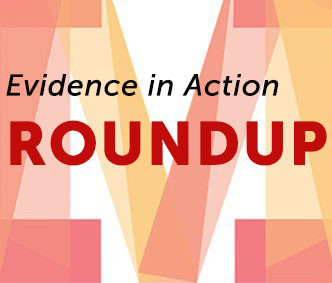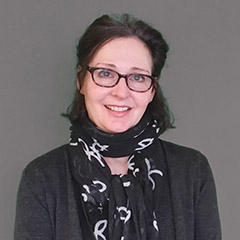
News, notes, and assorted ideas—all evidence-based and curated by the Evidence in Action blog team. Reminder: inclusion in the Roundup does not equal endorsement.
5 Strategies for Evidence-Based Policymaking (Governing)
Quentin Palfrey, North America executive director of the Abdul Latif Jameel Poverty Action Lab, says that despite the hyperpartisan climate of American politics today, the belief that solid evidence should inform policy decisions continues to pick up bipartisan support.
In the 20th century, randomized controlled trials revolutionized medicine, replacing guesswork with a rigorous, scientific method to determine what works and what does not. But in government and philanthropy, all too often decisions about how to allocate scarce resources have continued to be been informed by hunch and anecdote. Replacing hunches with facts has dramatic consequences. . .
Data science focuses on the practical aspects of efficiently creating, collecting, and handing digital information. Meanwhile, social sciences might be wary of the attendant pitfalls. Researchers at the London School of Economics weigh in on the tension.
Only when social science researchers remain committed to the virtues of their craft can the . . . benefits of the data revolution deliver on their promise to strengthen social research.
A Visual Guide to Statistics (Fast Company)
Just because math class wasn’t your favorite doesn’t mean you can’t master stats!
As the number of students and the backgrounds of students that are taking statistics grows, I think the pedagogy around statistics has to adapt too,’ Kunin says. ‘There are a lot of students taking it with less math literacy, but they have to take it for other disciplines. A visual approach might be the link for those students.
Measuring the Quality of Girls’ Education Across the Developing World (The Education Commission)
There was much to celebrate on International Women’s Day 2017. But Justin Sandefur, senior fellow at the Center for Global Development, also noted a sobering reminder of the importance of rigorous evaluation.
Slogans like ‘Learning for all’ and ‘Let girls learn’ sit awkwardly with the reality that nobody’s actually bothering to check if most of the world’s girls are learning or not. International learning assessments like PISA, TIMSS, or PIRLS exclude over 90% of the worlds’ kids from the sampling frame, and test precisely 0% of kids in low-income countries.
Harvard’s First Lady (Harvard School of Public Health)
Speaking of #IWD2017, three cheers for a “very sound and unusual person.” Meet Harvard's first female faculty member, Alice Hamilton, who was a tireless researcher.
It was while living at Hull House and providing medical care that Hamilton began her groundbreaking research into dangerous workplace conditions, ultimately developing a unique expertise in occupational diseases—most notably lead poisoning—and serving on numerous national and international committees and commissions. She was a passionate and tireless advocate. ‘There’s too much chivalry outdoors and too little indoors,’ she once observed, referring to the toxic work environments where many women labored.


